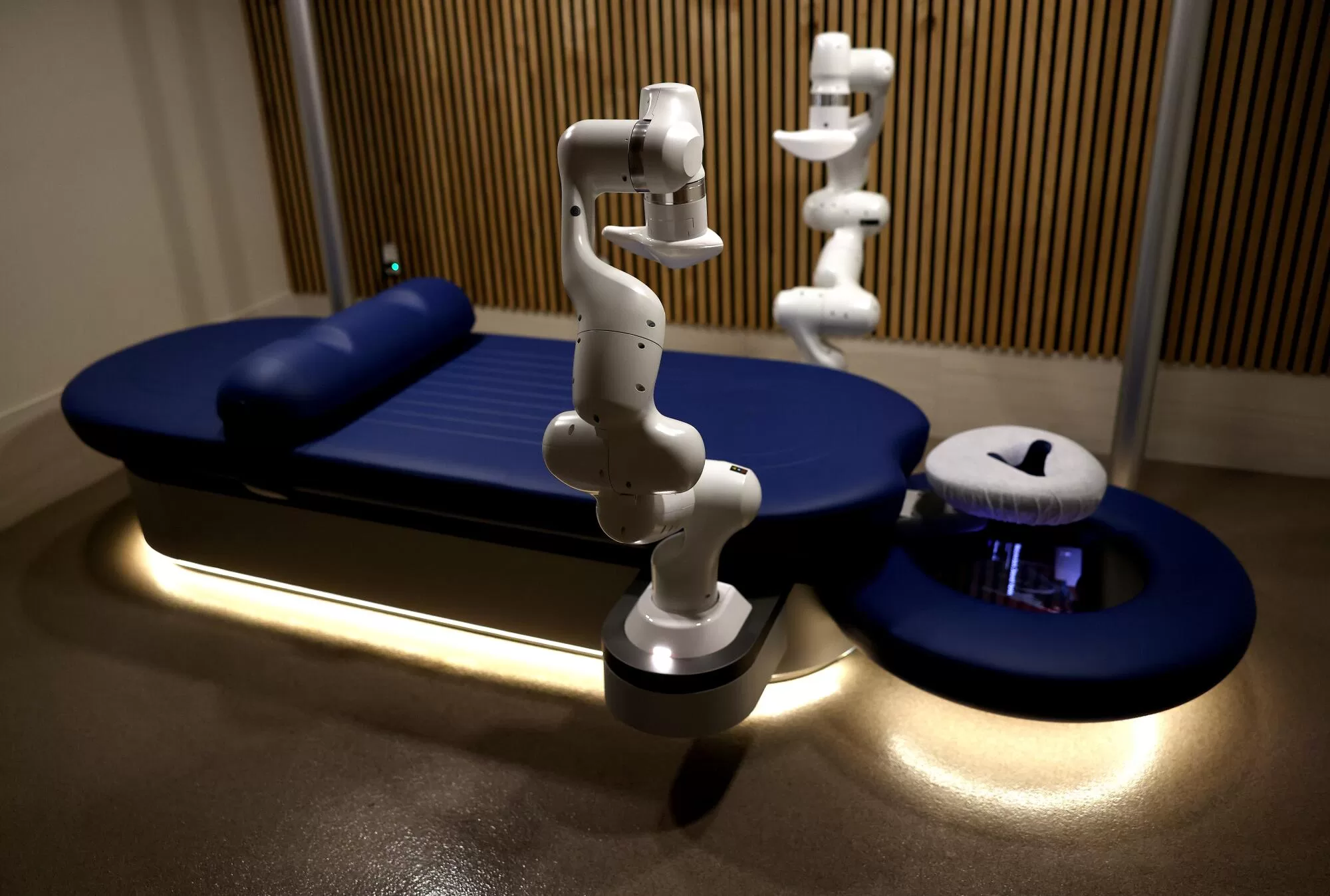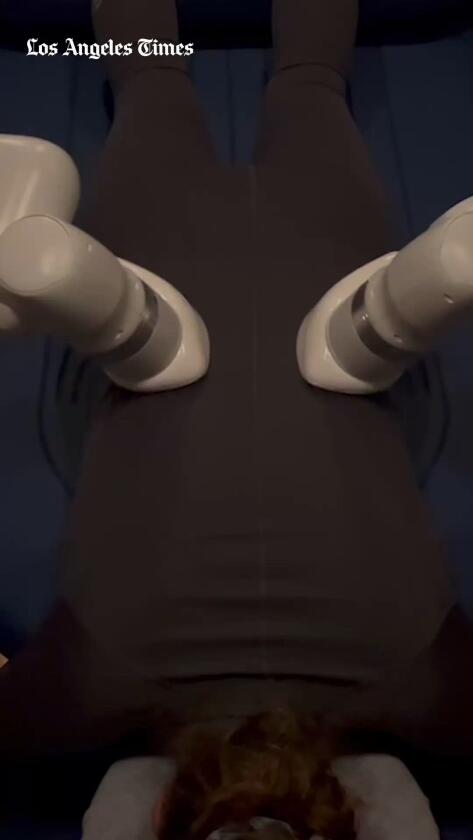My first meeting with Aescape, the AI-powered massage robot, was benign enough — if a bit eerie. As if HAL had gotten a job in the Valley. I stepped into the austere spa room at Pause, a wellness center in Studio City, and a sturdy massage table commanded the space. It was deep-sea blue and plush, glowing from LED lights that lined its base. Its enormous, sculpted robot arms promised a unique spa experience.
Yes, I was about to get a transformative butt massage by an AI-powered masseuse.
Aescape sparked a media frenzy when it debuted in New York in August at a handful of Equinox gyms. This week, it arrives in Los Angeles. Aescape will open its robotic arms for business Friday at Pause.
I got a sneak peek, however, the day before Thanksgiving. Upon arrival, I slipped into specialized compression wear that the Aescape company provided for optimal friction; no oil is required for this massage.
After lying on the table belly down, my face nestled into a padded cradle, I selected my playlist on a touch screen (beach house to start, then relaxing piano music). I quickly forgot about the overhead depth sensors and surrounding robotics and drifted into calm. And although I longed for the intimacy of a human masseuse, I found it to be a surprisingly decent session. Here’s how things went.
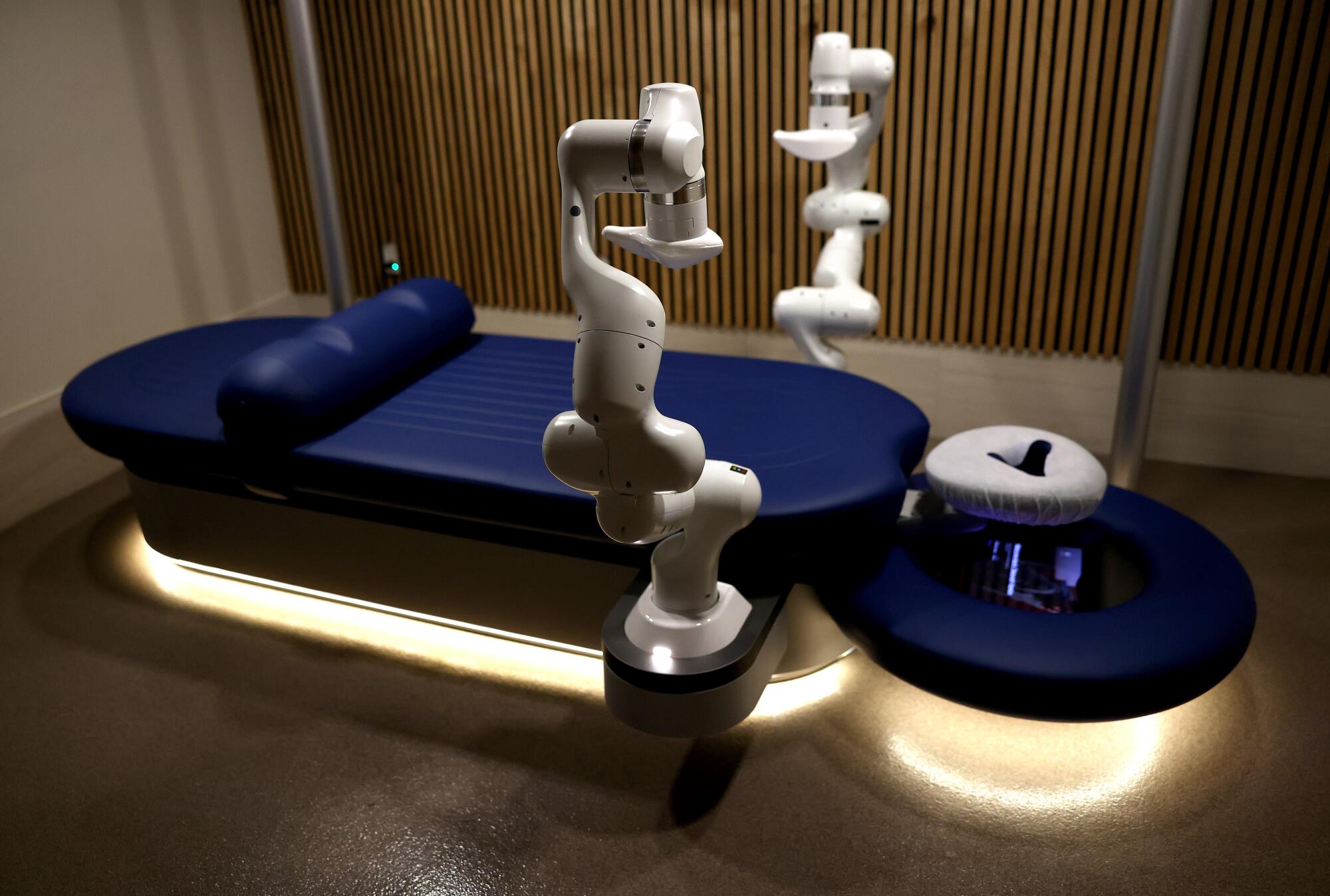
The Aescape massage table.
(Christina House / Los Angeles Times)
First, four high-resolution infrared sensors took a 3D scan of my body from above, mapping 1.2 million data points — every curve and asymmetric point on my frame, much to my chagrin — so Aescape could pinpoint where I was on the table and better target my specific body parts. Then its hulking robot arms reached up and around my torso, before beginning to massage me.
Aescape has heated “hands,” which look like giant pads with touch points on their undersides. They’re modeled after the way a massage therapist uses their body parts as tools, kneading with the blade of the hand at one point, then pressing or rolling with the heel of the palm, the elbow or forearm. I’d selected gentle intensity, so Aescape kneaded slowly and deliberately around my scapula at first, then applied light rolling pressure along my spine, mid-back. It didn’t feel exactly like a human hand; but surprisingly, I wasn’t creeped out, either. Instead, the experience mirrored that of a sophisticated massage chair in horizontal — not as effective as an actual person but still providing much-needed relief in key areas.
The Aescape massage is totally customizable. You dictate the kind you want — I chose “total back and glutes,” but “upper and mid-back focus” and “lower back, glutes and hamstrings focus” were also offerings. You can also use the touch screen to control the intensity of your massage as it’s underway, increasing or decreasing the pressure, or pausing altogether.
Aescape is the brainchild of Eric Litman, a self-described serial entrepreneur who suffered from neck pain due to a bulging disc and needed daily massages, even while traveling internationally. That’s a headache to schedule, especially when there’s a shortage of massage therapists in the U.S., according to the International Spa Assn.
As a solution, Litman imagined a “fully automated, customizable massage experience,” with the goal of “bringing personalized wellness robotics to the masses,” as the Aescape company describes its mission. Litman founded the robotics company in 2017 and by November 2023, it had $85 million in funding from technology, wellness and hospitality backers.
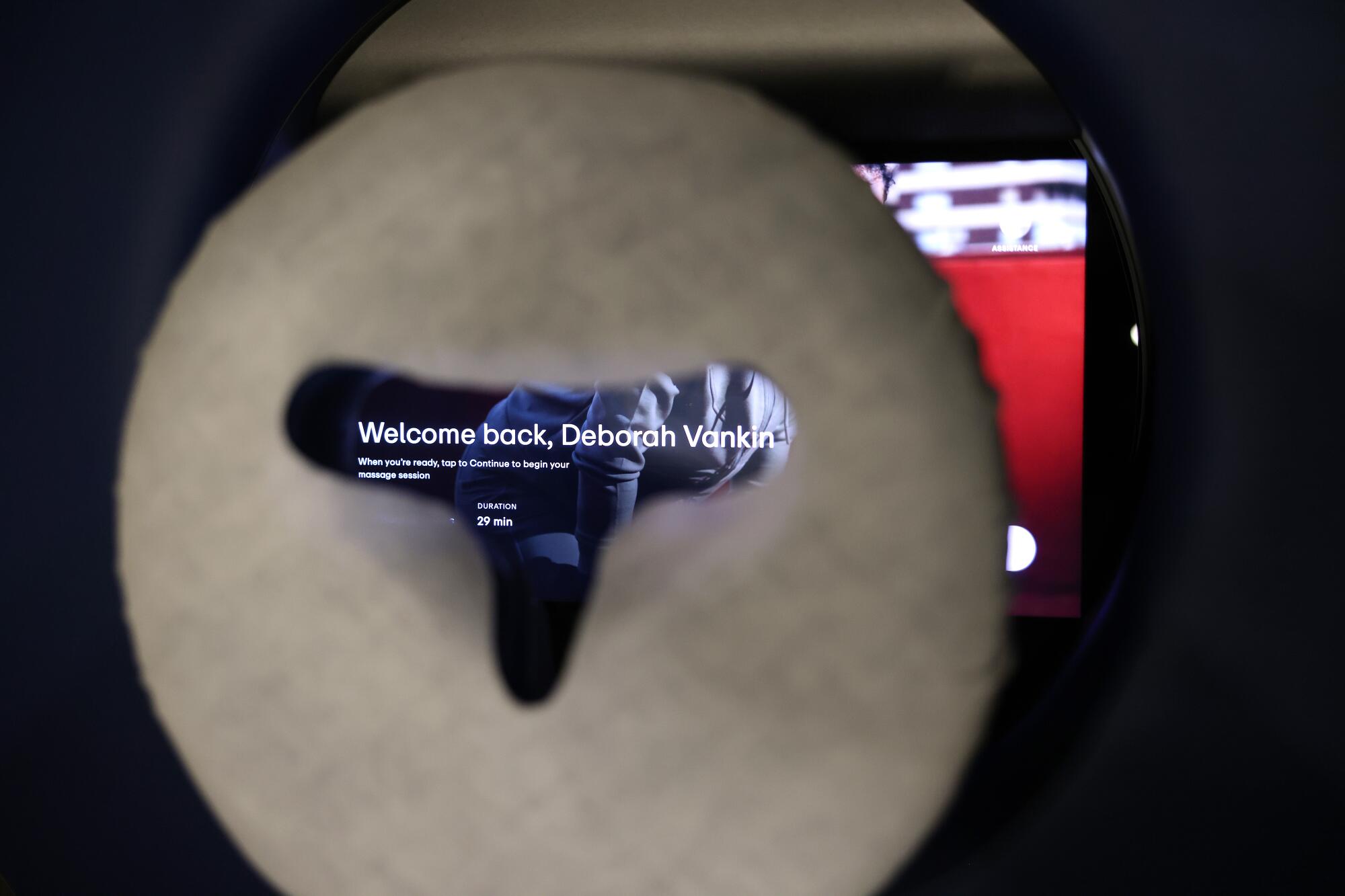
The Aescape massage table’s padded face cradle and user touch screen.
(Christina House / Los Angeles Times)
“The intent was to build a product that addressed the needs of people like myself who struggled with getting the specific massages that their body needed — whether that’s because of a lack of therapist availability, a lack of consistency among therapists or just the desire for a very personalized experience,” Litman said in an interview. “So what we’ve built is something that caters remarkably well to all three of those needs. It’s accessible in many ways: It’s easily booked, it’s usable by people who wouldn’t otherwise be comfortable getting a massage [by a human] and it puts you in control, allowing you to get the specific massage you want at that moment in time.”
Then there’s this — for better or worse, AI masseuses don’t need breaks to rest their hands. They’re the ideal employees.
“It can operate 24 hours a day,” Litman said. “So it can be available at 11 at night, hours when you’re unlikely to find a masseuse available.”
The Aescape company plans to roll out tables at spas, hotels and fitness centers as well as at corporations, for office workers, nationwide. In addition to its New York and L.A. locations, Aescape tables are now operating in Miami, Baltimore, Nashville, Atlantic City, N.J., and Orlando, Fla. One will debut at the Ritz-Carlton Bacara in Santa Barbara on Dec. 16. Users can find nearby Aescape tables and book sessions on an app.
Software engineers offer frequent updates to the Aescape tables on the types of massages available or the music you can listen to. A holiday playlist was added just this week, for instance.
However, Aescape is not cheap: $60 for half an hour, $120 for an hour.
It’s also not as intelligent as I’d hoped. Aescape knows where your body parts are located in space, so as to target the areas you’ve selected for your massage. But the feature allowing it to intuit areas of tension that need massaging hasn’t been rolled out yet, Litman says. However, it is getting smarter, he adds.
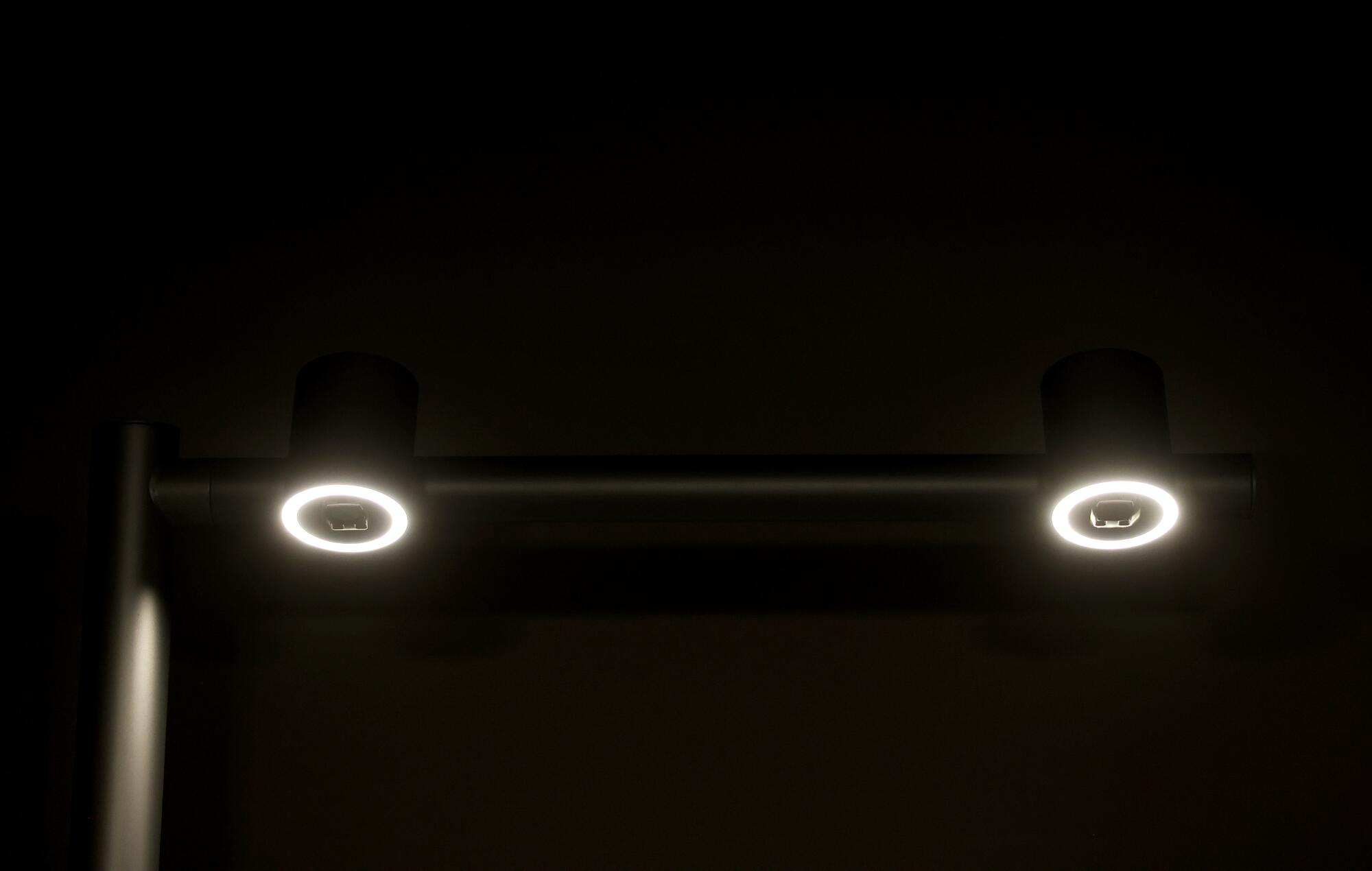
Aerial sensors take a 3D scan of your body, mapping 1.2 million data points, so the massage robot knows where to target your aches and pains.
(Christina House / Los Angeles Times)
“It will continue to learn from all the massages that we give, across all our tables,” Litman says, “and allow for people to get a much more customized, precise massage experience.”
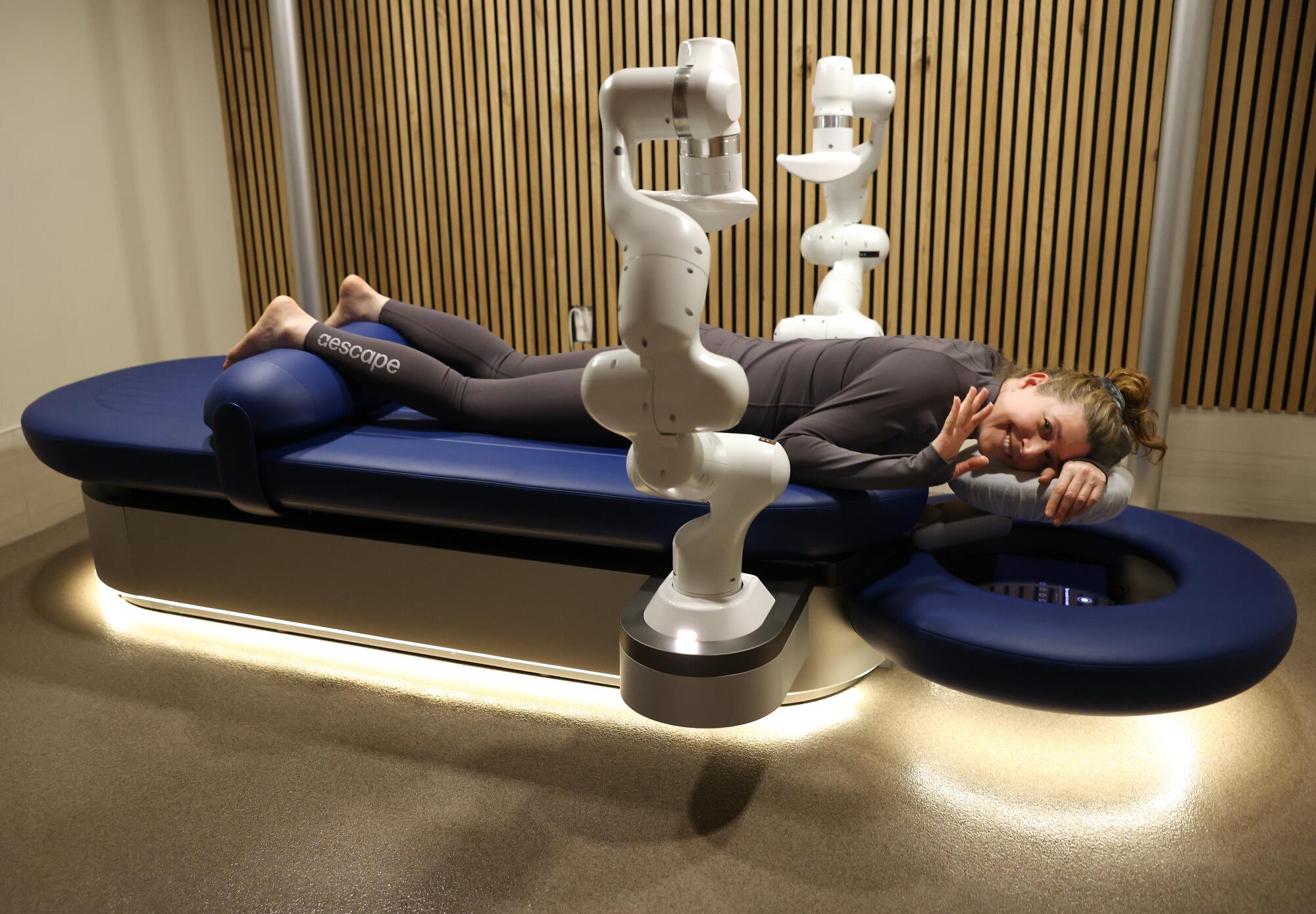
Times reporter Deborah Vankin after her robot massage.
(Christina House / Los Angeles Times)
As a massage junkie, I prefer the warmth and responsiveness of human touch.
Even so, Aescape gave me a pretty decent massage. I had run stairs the day before for exercise and my glutes were sore. The robot masseuse kneaded my butt in just the right spots and even relieved shoulder tightness from hours of typing at my desk.
And as a bonus, it didn’t interrupt my massage with chitchat.
